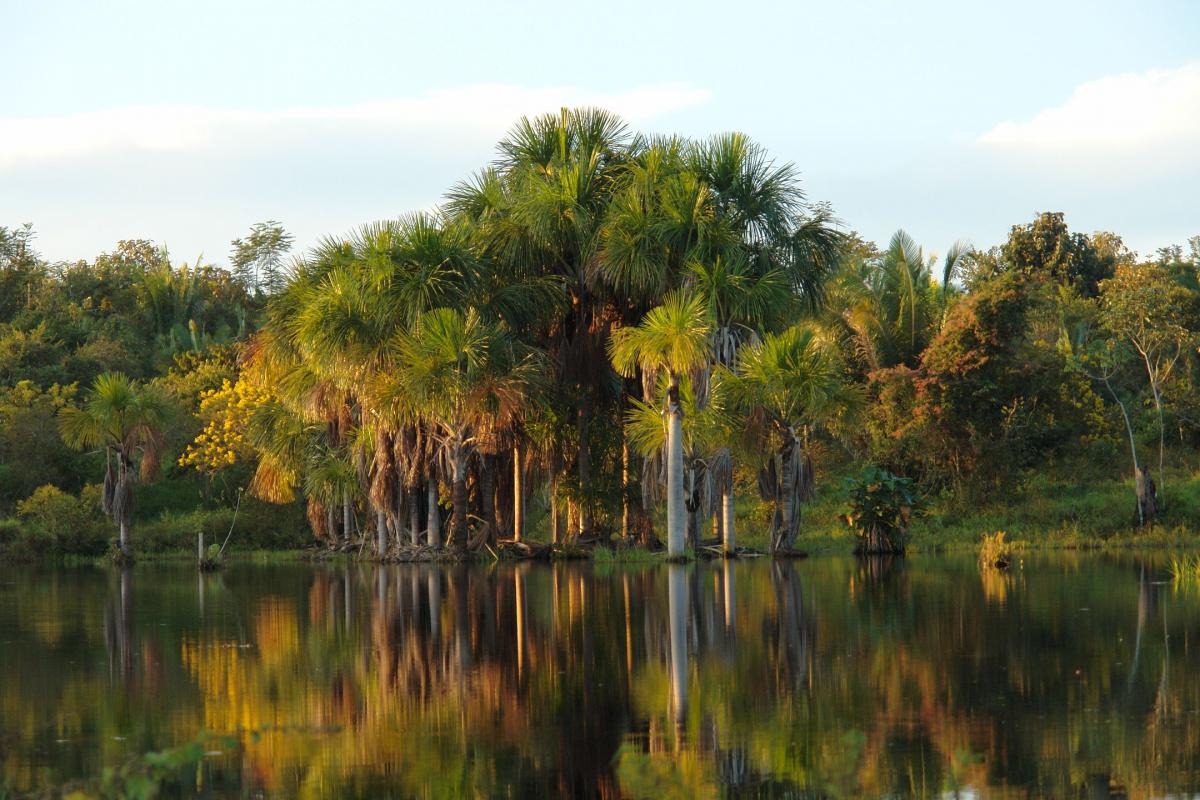Sharing Green List experiences from Latin America and the Caribbean
On June 26, for the celebration of the International Day of Tropical Forests, the IUCN Secretariat and the World Commission on Protected Areas organized the virtual discussion “Green List, a future beyond 2020: sharing experiences in Latin America and the Caribbean”. In it, experts and participants shared their rich experiences in the successful implementation of the Green List.
Latin America and the Caribbean has a varied, vibrant and growing experience in implementing the IUCN Green List. In this sense, and with the start of the Green List Amazon project this year, a series of virtual meetings were held in June. Over 500 experts and interested public from the region exchanged experiences and lessons learned about its implementation and benefits of getting involved.
A few days before, and within the framework of a global consultation with experts on ways to improve the Green List implementation processes, a "Green List Hackathon" was developed and held to zoom-in on solutions. This built on the lessons learned in the implementation of the Green List in Latin American countries. This session is the first of this global consultation process and the start of the work of a new Latin Green List Community, which includes European countries such as Spain, France and Italy, as well as the Americas and some Caribbean countries.
On 30th June a third event hosted by Redparques included IUCN’s Trevor Sandwith, Director of the Global Protected Areas Programme, who provided reflections on the Post 2020 process to develop a global conservation framework. He highlighted the need for Standards such as the Green List to help us all understand, measure, and celebrate success in area-based nature conservation.
The implementation of the Green List in the region began with a pilot site in Colombia in 2014. Currently, in Latin America and the Caribbean, there are multiple experiences of implementing the Standard in Colombia, Peru, Belize, Guatemala, Costa Rica and Mexico; Honduras, Guyana, Bolivia, Brazil and Ecuador recently joining the process. Green Listed and candidate protected and conserved areas in the region include:
- In Colombia: Galeras Flora and Fauna Sanctuary, Gorgona National Natural Park and Tatamá Natural National Park and recently the Malpelo Flora and Fauna Sanctuary.
- In Peru: the Cordillera Azul National Park and the Amarakaeri Communal Reserve.
- In Mexico: San Pedro Mártir Island Biosphere Reserve and Marine Zone of Espiritu Santo Archipelago National Park.
A further 80+ sites are proposed or active candidates, working towards meeting the Green List criteria, including more than 25 in México alone and at least 20 in the Amazon region covered by Bolivia, Brasil, Colombia, Ecuador and Peru.
These advances are an example of the commitment that the of Members, Commissions and Secretariat that make up IUCN have in compliance with the agreements, principles and rules in the Bariloche Guidelines, the Sydney Promise or the Lima Declaration, among others.
We knew that 2020 is a critical year in biodiversity conservation on a global scale and an opportunity to look to the future and make key decisions, but the year has come hand in hand with both COVID-19 and political changes in Latin America. This has posed additional challenges to those already faced by the region's protected and conserved areas (lack of financing, weakening of institutions, conflict between public policies, a resurgence of illegal activities). In this sense, the IUCN Green List is an opportunity to take a positive turn in the situation, highlighting the importance of protected and conserved areas in the development of countries: How does the Green List contribute specifically to post-2020 discussions? How do Green List cases in the Amazon and in Latin America and the Caribbean make a difference in the post 2020 agenda? The Green List works on sites, expert groups, standards, certificates, the question we should be asking now is how do we convert these tangible results, which show the effectiveness of public and private investment, into political impact?
The rich discussions garnered from these meetings have demonstrated the great interest of the actors in the region in acting as a "Latin American Green List Community". IUCN is committed to promoting and energizing it, directly supporting compliance with the agreements of the III Congress of Protected Areas in Latin America and the Caribbean, (CAPLAC III).
Pt.1 - Lista Verde, un futuro más allá del 2020: compartiendo experiencias en América Latina y el Caribe from IUCN Green List on Vimeo.
Pt.2 - Lista Verde, un futuro más allá del 2020: compartiendo experiencias en América Latina y el Caribe from IUCN Green List on Vimeo.
About the Green List Amazon project:
The IUCN and the Andes-Amazon Initiative of the Gordon and Betty Moore Foundation have joined in the Green List Amazon project, to support the implementation of the Green List Amazon project in 5 countries of the Amazon biome: Bolivia, Brazil, Colombia, Ecuador and Peru. Thus, the certification process will be underpinned through capacity building, regional coordination, knowledge exchange and the promotion of a “Green List Community” made up of independent experts (EAGL Groups), technical personnel from national systems and of the protected areas, and the communities that inhabit them. Conservation commitments at the local, national and regional levels will also be consolidated and technical inputs will be provided for management and governance evaluations. The goal for 2022 is for 20 areas in 5 countries of the Amazon biome to be involved in the Green List Standard certification process.






